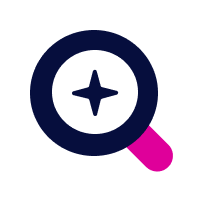Proactive Regulatory Monitoring: the Key to Effective Risk Management
Banks and service providers are actively adjusting their processes to keep pace with the ever-changing regulations. Yet, over the past eight years, operational expenses have soared by more than 60% due to costly compliance errors.
Your compliance team is an important line of defense for all aspects of your business. Staying up to date with all the regulatory updates is a laborious task. Also, relating those changes to your existing assets or products is difficult, especially when those documents are always changing. Fortunately, artificial intelligence technologies can help with both problems.
In part one of our series, we shared how technologies such as artificial intelligence (AI) and Generative AI (Gen AI) strengthen your first line of defense in proactive risk identification, effective risk management, and regulatory compliance to lighten the load on your compliance teams.
Augment compliance teams with Gen AI
Compliance teams face frequent updates, complex product contexts, and multiple business lines. Monitoring manually is time-consuming and prone to errors. Plus, tight deadlines make it hard to access needed information.
The right tools can simplify your compliance team’s work with:

Real-time regulatory updates: Gen AI summarization combined with traditional media monitoring provides real-time signals from regulators, including requests for comments (RFC), blog posts, tweets, and conference details.

Internal document mapping: Gen AI also finds internal documents and content related to those signals. It maps affected documents across all company resources, including policies, disclosures, product descriptions, and website content.

Enhanced compliance monitoring: Together, Gen AI helps the compliance team understand changes and trends, making it easier to understand how those changes will affect their work.
PROCESS
Weaving Gen AI into existing compliance processes gives a comprehensive overview of changing regulations. Gen AI delivers regular updates and notifications about expected changes and enforcement actions (compliance risks).
Challenge:
- Detecting noncompliance too late
- Need for human review
- Multiple screens, apps, and tools
- Update only written policies
A better way:
- Offers early notifications about planned compliance changes
- Augments, not replaces, the team
- Fully embedded within existing processes and tools
- Ensures everyday operations also follow regulations
A strategic approach

Without proper planning, your organization could face fines when regulations change. That’s why a proactive strategy is important. You need to update business strategies, projections, recruitment plans, disclosures, and content design before new regulations take effect.
Choose the right technology
In conclusion, compliance is another area where Gen AI can take a traditionally manual task and make it better, cheaper, and faster for everyone involved. However, deploying Gen AI, or any technology, without a concrete strategy reduces its effectiveness. It’s important to know where, how, and if Gen AI addresses your business needs. Gen AI implementation isn’t about favoring one technique over the other. It’s about choosing the best tools for the job.
That's why having a knowledgeable technology partner is important. SoftServe offers a tailored approach to Gen AI implementation, ensuring effective and efficient solutions aligned with business goals. We pick the right mix of technologies and smoothly integrate them with your current systems.
Lighten the workload for compliance teams, improve adherence, and cut down on compliance costs and risks.


